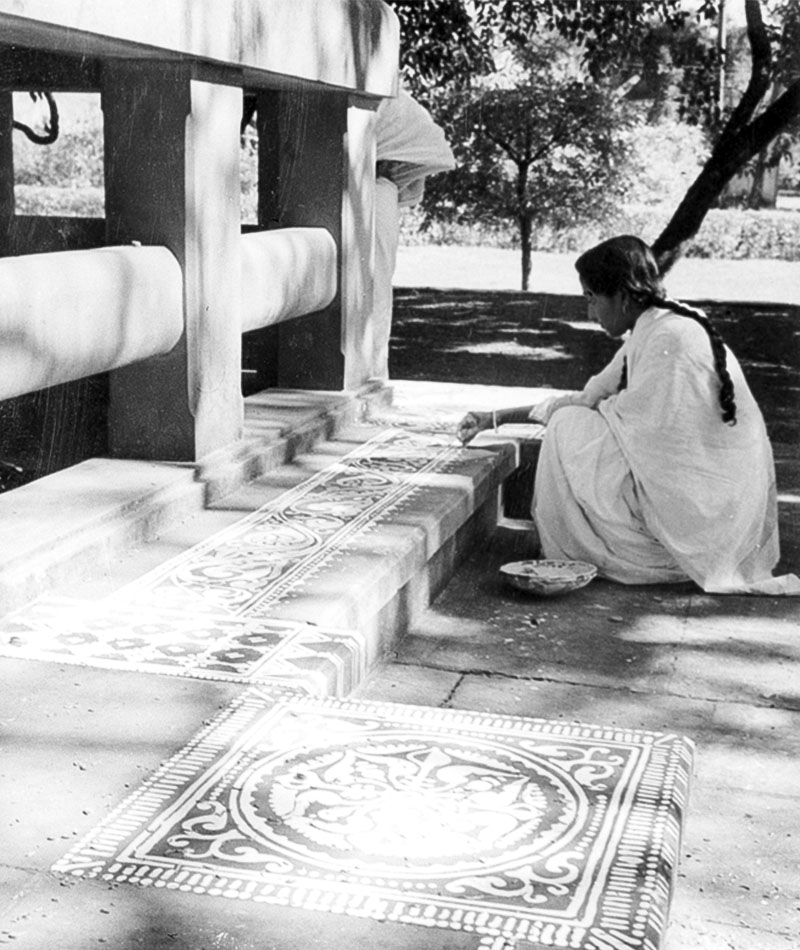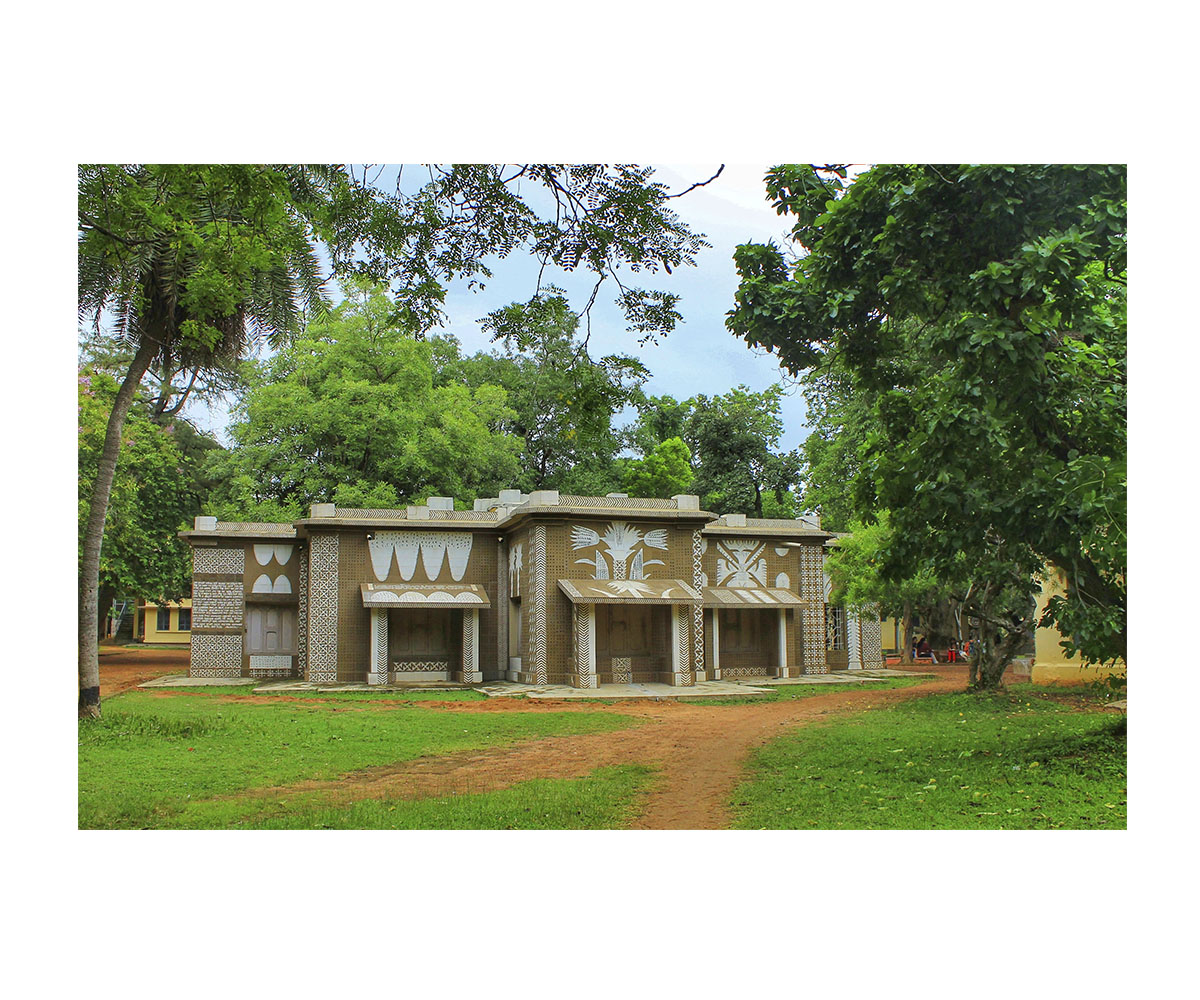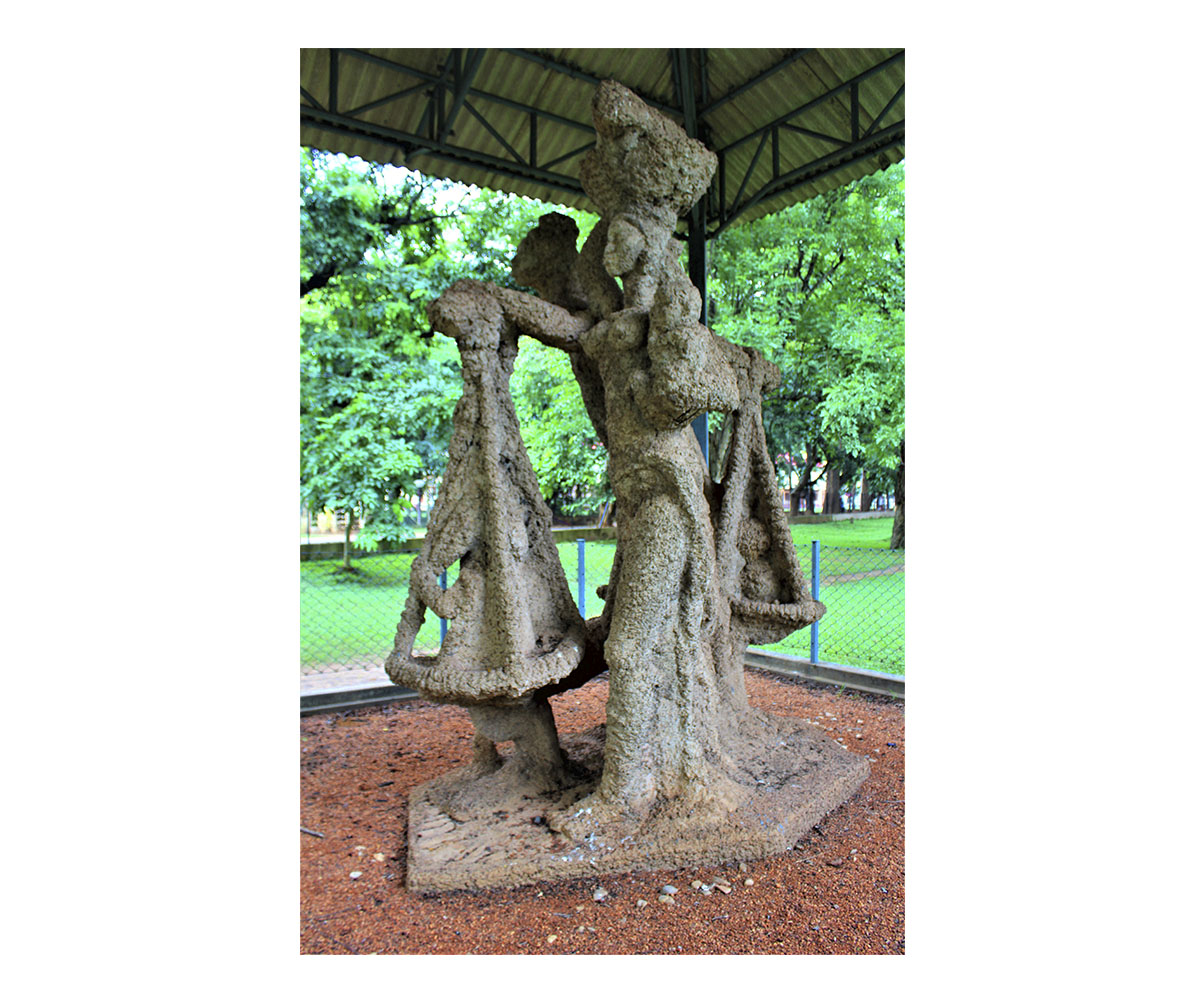ARTICLE
Kala Bhavana, Shantiniketan
Mukherjee, one of Kala Bhavana’s first students who later began teaching there, also focused on developing a linguistic rationale that reflected local realities and integration with the natural environment rather than the notions of self-definition and nationalism. Baij, also a former student, was instrumental in changing sculptural practices at Kala Bhavana with his use of affordable materials such as cement, pebbles and concrete. Although a painter of considerable range and skill, his contribution to the school came in the form of monumental sculptures installed throughout its campus. Other notable alumni include Jogen Chowdhury, Somnath Hore, KG Subramanyan, R Siva Kumar, Satyajit Ray and Jayasri Burman.
Kala Bhavana, unlike many of the other institutions of art and art education, did not rely on government sponsorship for its establishment or operation. Turning down financial support from the colonial government, Tagore dipped into his own funds — from his Nobel Prize in 1931 and his book sales — to finance the school’s upkeep and activities until his death in 1941.
Ten years later, in 1951, the Visva-Bharati University, under which Kala Bhavana operated, was brought into the fold of the central government. This assimilation with the national education system, however, constrained the alternative pedagogic style of the art school by implementing a fixed syllabus and incorporating mainstream academic practices. Although the circumstances of the change have caused it to move away from many of the core ideas with which it was built, Kala Bhavana remains an important and seminal institution in the history of art in India.
Bibliography
Our website is currently undergoing maintenance and re-design, due to which we have had to take down some of our bibliographies. While these will be re-published shortly, you can request references for specific articles by writing to hellomapacademy@map-india.org.










